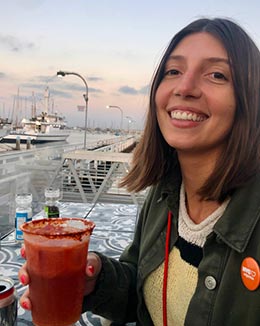The Most American Story of All Time

It’s been said that America has no culture of its own. Three days ago, I thought that was true. After all, even the most ‘Merican of the ‘Merican traditions come from everywhere but America. Fireworks come from China. Hot dogs were invented by the Germans. Baseball — that great national pastime of ours — was first played in England. And Justin Bieber is from Canada.
For the 4th of July, I set out to write a post debunking so-called “American” culture and traditions. But in the words of the Scots poet Robert Burns (words later stolen by dirty thieving American John Steinbeck — go figure), “The best laid plans of mice and men often go askew.”
Instead, I found a story that represents everything America stands for. It is a tale of entrepreneurship and the great Melting Pot; of the American Dream; of fast food, corn syrup solids and red dye 40.
It is the most American story of all time: the story of the Flamin’ Hot Cheeto.
It begins in California, 1976, with a man named Richard Montañez. A Mexican native, Montañez grew up picking grapes in a farm-labor community, where he was raised in a one-room apartment by immigrant parents. He was one of the first Hispanic, non-English-speaking students to be integrated into white schools in California. On his first day at school, he didn’t know the meaning of “race,” but he knew that he was different. He had darker skin, was forced to ride a separate school bus and the other kids had lunchboxes full of bologna sandwiches. His mother had packed him a burrito.
Montañez felt ashamed. In this pre-Taco Bell era, burritos were foreign and strange. He went home that night and asked his mother to make him sandwiches instead, but she refused. “Tomorrow I’ll pack you two burritos. Go make a friend.” And so he did. By the end of the week, Montañez was selling burritos for 25 cents each.
Eventually, the difficulty of the language barrier and the pressures of integration led Montañez to drop out of school. But to this day, he describes himself as PhD certified — “poor, hungry and determined.”
In 1976, Montañez began working at the Frito-Lay factory. He was a janitor. He could barely speak English, but he was a determined worker. And he had no idea that he would one day embody the American Dream. “No disrespect to anyone,” said Montañez in an interview, “but my dream was to drive the trash truck.”
One fateful day, a machine at the Frito-Lay factory broke, and hundreds of bare-naked Cheetos were produced without their iconic orange dusting of “cheese.” Montañez took some of them home and tried to make do with the bland “corn” chips.
Inspired by actual corn — a Mexican corn on the cob called elote, coated with butter, chili powder and cheese — Montañez seasoned the Cheetos and gave them to his family.
They loved it. They wanted more — thousands more, enough to feed a nation. They encouraged Montañez to speak to his supervisors about making these spicy Cheetos into a thing.
After some persuasion, the secretary put Montañez in touch with the president of Frito-Lay. And with that, Montañez found himself with only two weeks to prepare a formal presentation for the executive board. He borrowed some books on marketing from the public library, bought his first ever tie for just $3 and designed a special bag to present his flamin’ creation.
Needless to say, his presentation was on fire. Thus, Cheetos’ top-selling product was born, and a nation was forever changed.
Today, Richard Montañez is no longer a janitor for Frito-Lay — he is their lead executive of multicultural sales and community promotions across North America. With his entrepreneurial drive and a passion for Mexican food and culture, he’s gone on to influence major brands such as Taco Bell and KFC.
The taste of the Flamin’ Hot Cheeto is the taste of opportunity. Its spirit is the spirit of entrepreneurship. And when it comes to great Americans, Richard Montañez ranks right up there with Steve Jobs, Oprah Winfrey and every American — famous or not — who rose from humble beginnings to achieve the American Dream.
And sure, it’s true. French Fries are Belgian, and the Statue of Liberty was a gift from France, and our favorite snack food was inspired by Mexican cuisine. But who cares? Perhaps that is exactly what makes them American after all.
This Independence Day, place your orange-stained fingertips over your heart and pledge allegiance to the flag — the American Dream is alive and flamin’.

Comments
Add A CommentThat's why there's a phenomenon called the American dream. A lot of topics cover this concept and a lot of scientists are trying to give a definition. They are making futile efforts, as American dream essay topics are never going to end - so many students work on their final exams, preparing reports and presentations about their cultural phenomena.